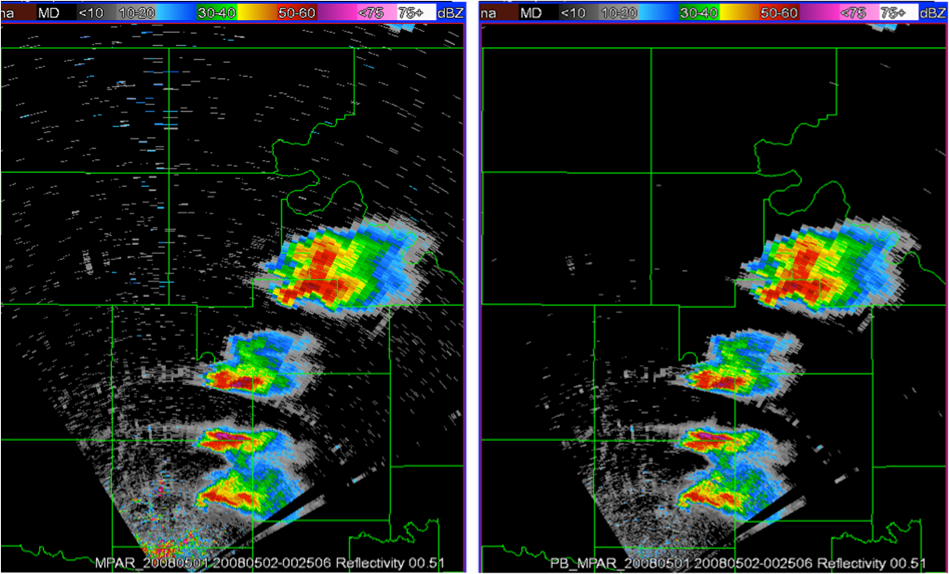MPAR Software Upgrades Project
Digital Signal Processor Upgrades
The need for signal processing improvements is twofold. On one hand, it is desirable that the NWRT PAR produces operational-like data with quality comparable to that of the WSR-88D. High data quality leads to better data interpretation and is conducive to the development of automatic algorithms. On the other hand, improvements are needed to demonstrate new capabilities, some of which are applicable to conventional and phased-array radars, and some that are unique or better suited to PAR technology.
Signal processing techniques address needs in four major areas: calibration, artifact removal, range-and-velocity ambiguity mitigation, and data precision. The system runs a few automatic calibration routines such as noise power and direct-current (DC) bias measurements. Time-series data are filtered to mitigate contamination from radio-frequency interference, strong point targets such as airplanes, and stationary returns from the ground such as buildings or trees. Ground clutter detection and filtering is done automatically in real time and the filter’s suppression is adjusted based on the strength of the contamination. To mitigate range and velocity ambiguities the signal processor can ingest multiple-pulse-repetition-time (PRT) data. In addition, accuracy of meteorological data can be improved by using range oversampling techniques or beam multiplexing.

Example of data quality improvements through signal processing upgrades on the NWRT PAR. Right and left panels show radar reflectivity data obtained with (right panel) and without (left panel) interference mitigation processing. [+]

